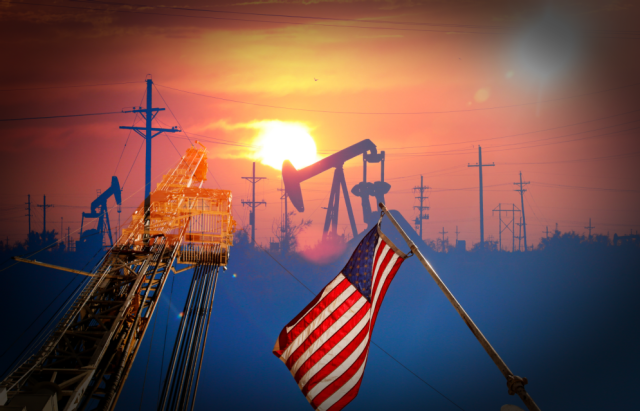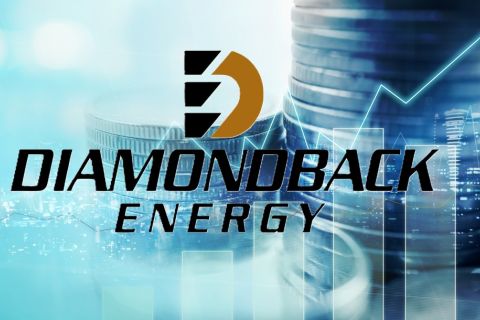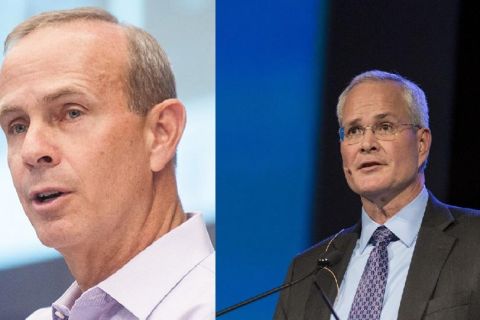
U.S. shale producers need to focus on lowering full-cycle costs, not just D&C costs, Occidental Petroleum CEO Vicki Hollub said during the opening day of the annual ADIPEC taking place virtually Nov. 9-12. (Source: Hart Energy)
The pandemic-induced crash has devastated the U.S. shale patch, threatening hopes for a production recovery in 2020. The fact that it’s time for a change to the current shale model, which had already fallen out of favor with Wall Street in recent years for failing to generate returns, is not lost on Vicki Hollub, CEO of Houston-based Occidental Petroleum Corp.
Speaking during the opening day of the annual Abu Dhabi International Petroleum Exhibition and Conference (ADIPEC) where energy ministers and global leaders convened to discuss post-pandemic market recovery, geopolitics and energy transition, Hollub laid out the steps shale producers should take to survive.
“In a lower-for-longer price environment, we are faced with a situation that U.S. shale growth model must change,” she said during an executive panel discussion on Nov. 9. “Rather than being a growth model, we have to adopt a value model, which means we need to focus on survival by getting full-cycle costs down, not just drilling and completions cost.”
The new shale model, she said, has to be one with the consolidation of positions and companies while focusing on returns instead of growth.
“They have to really look at what investors need today,” she said. “We’re in a difficult situation in the industry. … We’ve got to deliver value consistently and figure out a way to do that throughout the [production] cycle.”
It’s challenging for most shale operators to continue drilling and completing with WTI currently hovering around $40/bbl, she added.
“If you look at 2018 and 2019, U.S. shale industry drilled and completed an average of about 15,000 wells per year,” she said. “Currently, drilling and completion activity levels will deliver only 3,500 newly drilled wells and 4,500 new completions on an annual basis, based on what we’re seeing today.”
She continued, “This is less than needed to offset declines and resume growth.”
While the U.S. shale industry undergoes this transformation, she noted the Middle East region will remain key to Occidental’s portfolio.
“Being a large shale player in U.S. means we require conventional reservoirs and assets to offset the declines in production,” she said. “Our operations in Oman, Abu Dhabi and Algeria will be critical for us, moving forward.”
Also speaking on the panel, Claudio Descalzi, CEO of Italian oil company Eni SpA, said that oil and gas companies need to use all their available resources in order to navigate the downturn.
“We needed to guarantee energy security and strengthen the energy sector’s resilience, so we have to continue developing oil and gas but clearly with different kinds of parameters,” he said. “We have to be more selective, we have to increase efficiency, flexibility, the control and capability. … And while we are doing that, we have to deliver products with a very low carbon content.”
Sultan Ahmed Al Jaber, minister of industry and advanced technology of United Arab Emirates and group CEO of Abu Dhabi National Oil Co., also stressed on the need to mitigate climate change and ensure the industry’s resilience by increasing carbon efficiency.
“We know that when the COVID pandemic fades into memory, the world will still need oil and gas and will want that oil and gas to be as low carbon as possible,” he said delivering the keynote address on the opening day of the conference.
Discussing the market outlook, Descalzi believes oil prices will probably range between $40/bbl and $45/bbl next year. As for Hollub’s outlook, she sees prices improving as economies recover from the coronavirus. She added that improving demand could cause prices to spike starting from mid-2022.
Al Jaber said the demand for oil and gas will definitely grow.
“For a start, we know the world will still need oil and gas when all of this is done,” he said. “Even at the height of the lockdowns in March and April, the world still consumed 75 million barrels of oil per day. In fact, by our estimates, oil demand fell below 90 million barrels of oil per day for only 12 weeks. So, we know the world still needs oil and gas. That is a fact.”
He added that the months ahead will be challenging and oil demand may fluctuate but the long-term fundamentals of the industry remain intact.
“We expect that oil demand will grow to over 105 million barrels per day by 2030 and continue to supply over half the world’s energy needs for many decades to come,” he said. “At the same time, the petrochemicals sector will continue to grow at a healthy pace through and beyond 2050, in line with a steadily expanding global middle class.”
“These are long-term positive trends and they highlight the central role that our industry can and should play in a post-COVID recovery,” he continued.
Recommended Reading
E&P Earnings Season Proves Up Stronger Efficiencies, Profits
2024-04-04 - The 2024 outlook for E&Ps largely surprises to the upside with conservative budgets and steady volumes.
Petrie Partners: A Small Wonder
2024-02-01 - Petrie Partners may not be the biggest or flashiest investment bank on the block, but after over two decades, its executives have been around the block more than most.
CEO: Coterra ‘Deeply Curious’ on M&A Amid E&P Consolidation Wave
2024-02-26 - Coterra Energy has yet to get in on the large-scale M&A wave sweeping across the Lower 48—but CEO Tom Jorden said Coterra is keeping an eye on acquisition opportunities.
Endeavor Integration Brings Capital Efficiency, Durability to Diamondback
2024-02-22 - The combined Diamondback-Endeavor deal is expected to realize $3 billion in synergies and have 12 years of sub-$40/bbl breakeven inventory.
Exxon, Chevron Tapping Permian for Output Growth in ‘24
2024-02-02 - Exxon Mobil and Chevron plan to tap West Texas and New Mexico for oil and gas production growth in 2024, the U.S. majors reported in their latest earnings.





